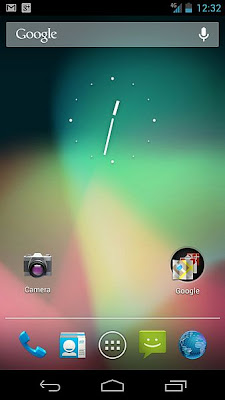The third-generation iPad (announced as "The new iPad", colloquially sometimes known as "iPad 3") is a tablet computer designed, developed and marketed byApple Inc. The third-generation iPad adds a Retina display, the new Apple A5X chip with a quad-core graphics processor, a 5 megapixel camera, full HD 1080p video recording, voice dictation, 4G (LTE) and Siri (coming 3rd quarter 2012). It shipped with iOS 5.1, which serves primarily as a platform for audio-visual media, includingelectronic books, periodicals, films, music, computer games, presentations, and web content.
In the U.S. and Canada, there are nine different variations of the third-generation iPad, whilst in the rest of the world there are six, although some countries just have the Wi-Fi only model for sale. Each variation is available with black or white front glass panels, with options for 16, 32, or 64 GB storage capacities. In North America, connectivity options are Wi-Fi only, Wi-Fi + Cellular on Verizon, or Wi-Fi + Cellular on AT&T, Telus,Rogers, or Bell. For the rest of the world, connectivity options are Wi-Fi only or Wi-Fi + Cellular, with the latter not being sold in some countries, and the LTE connectivity also not actually operational compared to the variations sold in North America.
The tablet was released to ten countries on March 16, 2012. It gained mostly positive reviews, praising its Retina display, faster processor, and 4G (LTE) capabilities. However, controversy arose when some users realized that the device would not work on 4G (LTE) networks in their country. Three million units of the 3rd generation iPad were sold in its first three days of release.
Software
The 3rd generation iPad shipped with iOS 5.1, which was released on March 7, 2012. It can act as a hotspot, sharing its internet connection over Wi-Fi, Bluetooth, or USB, and also access the App Store, a digital application distribution platform for iOS developed and maintained by Apple. The service allows users to browse and download applications from the iTunes Store that were developed with Xcode and theiOS SDK and were published through Apple. From the App Store, GarageBand, iMovie,iPhoto, and the iWork apps (Pages, Keynote, and Numbers) are available for purchase to use on the iPad.
The iPad comes with several applications by default, including Safari, Mail, Photos, Video, YouTube, Music, iTunes, App Store, Maps, Notes, Calendar, Game Center, Photo Booth, and Contacts. Like all iOS devices, the iPad can sync with a Mac or PC using iTunes, although iOS 5 and later can be completely Mac and PC-free. Although the tablet is not designed to make phone calls over a cellular network, a user can use a headset or the built-in speaker and microphone and place phone calls over Wi-Fi or cellular using a VoIP application.
The 3rd generation iPad has dictation, using the same voice recognition technology as the iPhone 4S. The user speaks and the iPad types what they say on the screen provided the iPad is connected to a Wi-Fi or cellular network.
The 3generation of iPad full reviw, detal specifications












